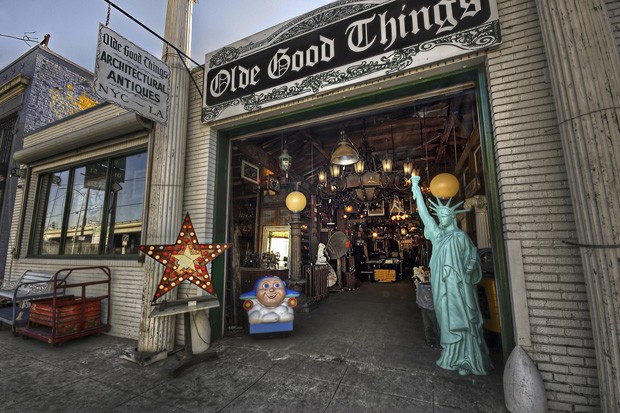Braving architectural salvage yards requires strength, but they rarely fail to unearth surprises.
From Belfast sinks to original surgeons taps and flagstone paving slabs, it is possible to lay ones hands on anything and everything
Once only the domain of those in the trade, nowadays with the surge in popularity of restoration, property owners are using them as a source of materials when doing up their houses.
One of the best resources for a preliminary online rummage around architectural salvage yards in Britain is the SALVO site (www.salvoweb.com) Also on the GAUK website. It has a directory of both antique and reclamation yards around the countryside and is a good place to start. From that point on it depends on timing and distance to suit individual needs.
Size does matter: When buying items from architectural salvage yards, it’s crucial to consider the size of the pieces. Measure the space where you plan to incorporate the item and ensure that it is proportionate to the room. Oversized pieces can overpower the space and create an unbalanced aesthetic. For example, if you’re purchasing an original Victorian bath, not only should you ensure that it fits within your bathroom, but also confirm that your floor can support its weight. Additionally, consider whether you have an adequate supply of hot water to fill the bath. Remember the old adage: measure twice and cut once.
Check quality: When browsing through architectural salvage yards, pay close attention to the quality of the items you’re interested in. If you’re considering purchasing marble pieces, avoid those that have been painted. Marble is naturally porous, and removing stains from painted surfaces can be challenging. Opt for pieces with their original marble finish for better authenticity and easier maintenance.
Watch out for stolen items: Unfortunately, there is a market for stolen property, including architectural pieces. To ensure ethical sourcing, inquire about the origin of the item you intend to purchase. Reputable salvage yards adhere to the Salvo code, a pledge not to sell stolen items. Make sure the dealer you are working with has signed this code, giving you peace of mind about the legitimacy of the items available for sale.
Be realistic: When dealing with historical properties, it may be challenging to find entirely authentic pieces that match the era of your home. If your house dates back to the 18th century, for example, it might be necessary to consider reproductions for certain elements. While reproductions may not have the same historical value, they can still capture the essence of the period and blend harmoniously with your home’s architectural style. Embrace the idea of combining authentic pieces with well-crafted reproductions to create a cohesive and historically inspired space.
Haggle: In the world of architectural salvage, haggling is often expected and welcomed. Don’t be hesitant to negotiate the price with the dealer. With the current exchange rates, where the dollar may be weaker against the pound, you may find yourself facing less competition from wealthy American buyers. Take advantage of this situation by confidently making lower offers. Engaging in respectful negotiation can potentially lead to significant savings on your purchases.
Some sites to look at:
- Recommended is the Drummonds site on the A3 near Hindhead, Surrey (01428 609 444) which is a great spot to pick up a host of reclaimed articles from country houses.
- Cox’s in Moreton-in-Marsh has a strong selection of fireplaces and doors.
- London Architectural Salvage and Supply Company (Lassco: 020-7749 9944 or www.lassco.co.uk, whose main site is a converted Victorian church in East London.
- Drew Pritchard Ltd in Wales who specialise in stained glass and architectural antiques. Tel 01492-874 004 or www.drewpritchard.co.uk
- For salvaged Victorian roll top baths or water closets, try Mongers in Norfolk. Tel 01953 851868 or www.mongersofhingham.co.uk

